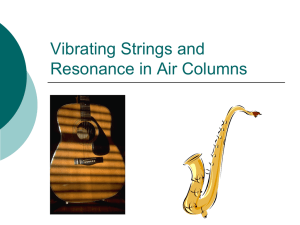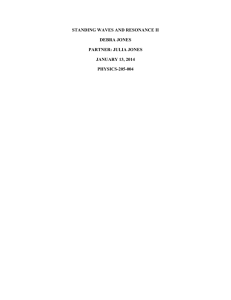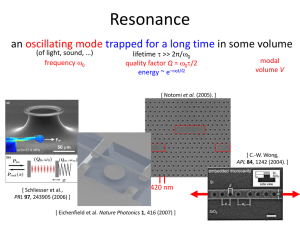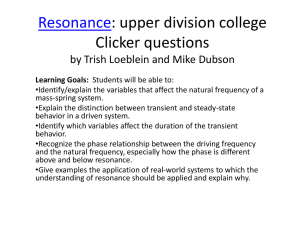instructions to authors for the preparation - The Gibson Group
advertisement
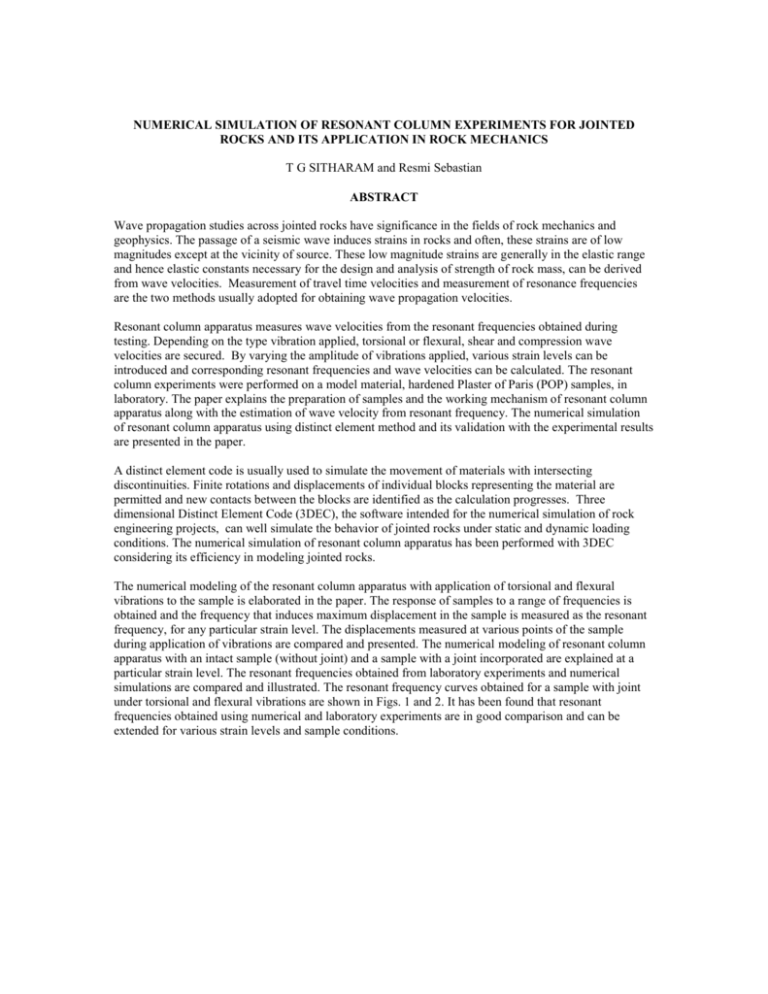
NUMERICAL SIMULATION OF RESONANT COLUMN EXPERIMENTS FOR JOINTED ROCKS AND ITS APPLICATION IN ROCK MECHANICS T G SITHARAM and Resmi Sebastian ABSTRACT Wave propagation studies across jointed rocks have significance in the fields of rock mechanics and geophysics. The passage of a seismic wave induces strains in rocks and often, these strains are of low magnitudes except at the vicinity of source. These low magnitude strains are generally in the elastic range and hence elastic constants necessary for the design and analysis of strength of rock mass, can be derived from wave velocities. Measurement of travel time velocities and measurement of resonance frequencies are the two methods usually adopted for obtaining wave propagation velocities. Resonant column apparatus measures wave velocities from the resonant frequencies obtained during testing. Depending on the type vibration applied, torsional or flexural, shear and compression wave velocities are secured. By varying the amplitude of vibrations applied, various strain levels can be introduced and corresponding resonant frequencies and wave velocities can be calculated. The resonant column experiments were performed on a model material, hardened Plaster of Paris (POP) samples, in laboratory. The paper explains the preparation of samples and the working mechanism of resonant column apparatus along with the estimation of wave velocity from resonant frequency. The numerical simulation of resonant column apparatus using distinct element method and its validation with the experimental results are presented in the paper. A distinct element code is usually used to simulate the movement of materials with intersecting discontinuities. Finite rotations and displacements of individual blocks representing the material are permitted and new contacts between the blocks are identified as the calculation progresses. Three dimensional Distinct Element Code (3DEC), the software intended for the numerical simulation of rock engineering projects, can well simulate the behavior of jointed rocks under static and dynamic loading conditions. The numerical simulation of resonant column apparatus has been performed with 3DEC considering its efficiency in modeling jointed rocks. The numerical modeling of the resonant column apparatus with application of torsional and flexural vibrations to the sample is elaborated in the paper. The response of samples to a range of frequencies is obtained and the frequency that induces maximum displacement in the sample is measured as the resonant frequency, for any particular strain level. The displacements measured at various points of the sample during application of vibrations are compared and presented. The numerical modeling of resonant column apparatus with an intact sample (without joint) and a sample with a joint incorporated are explained at a particular strain level. The resonant frequencies obtained from laboratory experiments and numerical simulations are compared and illustrated. The resonant frequency curves obtained for a sample with joint under torsional and flexural vibrations are shown in Figs. 1 and 2. It has been found that resonant frequencies obtained using numerical and laboratory experiments are in good comparison and can be extended for various strain levels and sample conditions. 1.3E-07 Displacements (m) 1.2E-07 1.1E-07 1.0E-07 Resonant frequency curve 9.0E-08 8.0E-08 180 190 200 210 220 230 240 Resonant frequency (Hz) Fig. 1 Resonant frequency curve obtained from numerical simulation in torsional vibration. 9.90E-07 Displacements (m) 9.85E-07 9.80E-07 9.75E-07 9.70E-07 Resonant frequency curve 9.65E-07 9.60E-07 110 120 130 140 150 160 170 Frequency (Hz) Fig. 2 Resonant frequency curve obtained from numerical simulation in flexural vibration. KEYWORDS Wave velocities, Resonant frequency, Resonant Column Apparatus, Distinct Element Method, Numerical simulation
